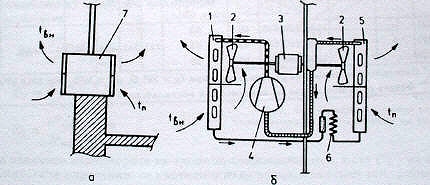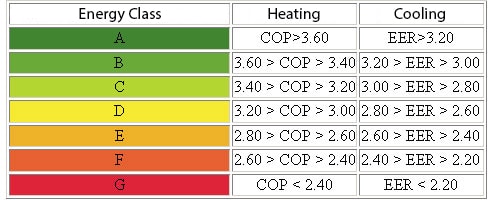It’s winter. It’s cold. In some places – it’s really cold. In times like these heating your home sufficiently and efficiently becomes a prime concern. And while an air conditioner is not always the most cost-effective way to do that, it often still is, and it’s also the best way to give yourself some comfort and coolness in the hot summer.
So how does this miracle machine work? Well, its purpose is clear – to maintain the parameters of the microclimate or more precisely – the room temperature. But how does it achieve that?
In the system of the air conditioner circulates a refrigerant called Freon. By changing its physical condition the AC can either take heat (and cool the air in the room) or give heat (and heat the air in the room).
The air conditioner consists of four main parts and some other ancillary ones. The main are:
• Compressor
• Capacitor
• Expansion valve (or capillary tube)
• Evaporator
To ease the explanation we’ll use a simple diagram of an air conditioner:
The compressor (4) sucks gaseous Freon, increases the pressure and the temperature, and injects it into the condenser (1). The condenser is a heat-exchanger which gives out warmth thanks to the blowing of a fan (2). Then the Freon passes from gaseous state into a liquid. From the condenser the Freon passes through a capillary tube (or expansion valve) (6), where its pressure is lowered and the Freon enters the evaporator (5). The evaporator is a heat exchanger which removes heat from the environment. In it the Freon goes from liquid to gaseous state. Again, for speed and for a more effective process, there’s a fan (2). After that the Freon enters the compressor and the cycle repeats. Of course all this is accompanied by the work of other components such as controllers, sensors, and others.
The refrigerator works on the same principle. The main differences between the two machines are:
• Temperature differences between the two – because of that they use different types of Freon;
• Also – the AC has the option for a heating mode.
You can also check out this video.
Main parameters of the AC:
If you look at a catalog somewhere you will most likely see the data of the air conditioner in a tabular form. In this chart you will see a lot of things: class of energy efficiency, power, air flow, current, power input, EER, COP, size and more.
You might be familiar with some of those, but unless you’ve encountered the rest, you’re probably wondering what exactly they mean.
One of the first things that might raise your eyebrows is that the output data is sometimes in kW and other times – in BTU / h. In some brochures you can even see them skipping kW altogether.
• What is a BTU/h?
BTU stands for British Thermal Unit. It’s the quantity of heat needed to raise the temperature of one pound (0.45 kg) of water by one degree Fahrenheit (0.56 degrees Centigrade).
1 kW = 3413 BTU / h or 1000 BTU / h = 0.293 kW.
• What is COP?
COP stands for Coefficient of Performance. COP is the input/output ratio in heating mode.
• What is the EER?
EER = Energy Efficiency Rating. It is equal to the ratio of energy seized from the room to the electric power consumed in cooling mode.
The larger COP and EER are – the more economical machine is. Depending on these two coefficients each AC has an energy efficiency class:
All manufacturers/distributors are obliged to put the product label for energy efficiency class.
And here you have it – most of the basics about the inner workings of an AC unit! We hope you found this helpful!


